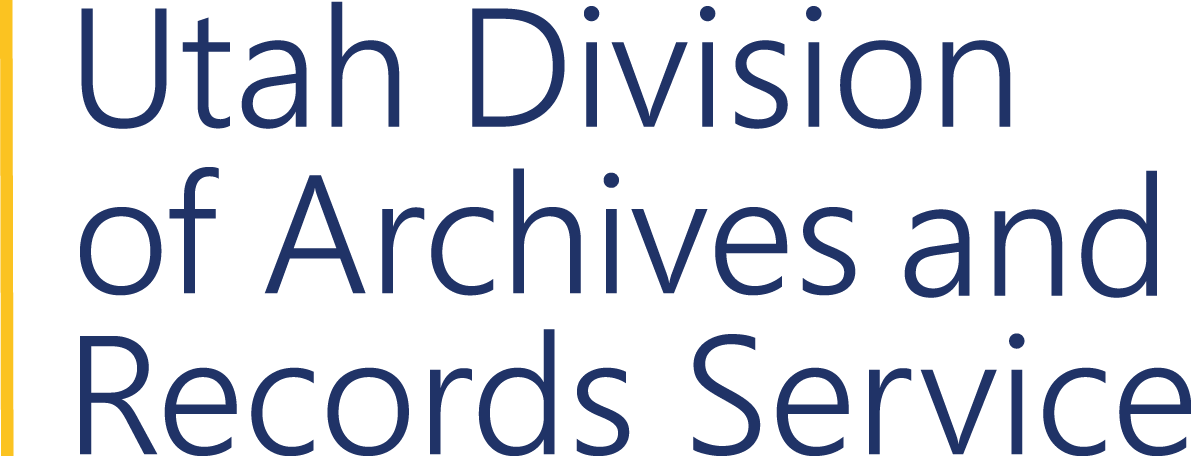STAR MINING DISTRICT (UTAH). RECORDER
Agency History #3200
CREATION
Beaver County miners organized the Star Mining District in the Star Range southwest of Milford on 8 July 1870. The Star District included Shauntie, a significant mining settlement which was the hub of Beaver County mining activity during the decade of the 1870s. For the most part, individual miners rather than large mining companies prospected in the Star District and most had limited success. The Star District was organized two years before Congress passed a general mining law validating the already established precedent that individuals had the right to claim mineral wealth in the public domain (Statutes at Large, Treaties, and Proclamations, of the United States of America, vol. 17, 1872, chap. 152). Nineteenth century miners organized mining districts in local areas to manage mining activity and to elect recorders to keep records of claims. In 1897 the Utah legislature enacted a mining law which transferred responsibility for keeping mining records from mining district recorders to the county recorder. At that time the records of the Star District were transferred to the Beaver County recorder's office (Laws of Utah, 1897, chapter 36).
FUNCTIONS
Star Mining District by-laws commissioned recorders to keep a 'true, correct, and faithful record of all claims located in the district.' Originally, Star prospectors were allowed to claim only 200 feet along a lode, with the exception that the original discoverer was allowed an extra 200 feet. At the time of discovery prospectors were to mark the site with a substantial monument on which was posted the names of locators, the number of feet claimed, and the date. Thereafter, prospectors had 15 days in which to have the claim recorded by the district recorder. By-laws required that within 60 days of discovery, prospectors should complete at least 1 day's work for each 200 feet of the claim. When claims holders had completed $100 worth of work they were to have permanent title and could hold the claim as real estate. After 1872 miners in the Star District revised by-laws to conform to federal regulation which allowed prospectors to claim up to 1500 feet along a lode with 300 feet on each side. Federal mining law required an annual labor assessment of $100 worth of work to hold a claim.
ADMINISTRATION
Miners in the Star District elected recorders for one year terms. By-laws required recorders to go to the ground and inspect and evaluate all work done on claims before making any record. They kept records in suitable bound books which were open for public inspection.
Star District recorders appointed deputies to assist them in carrying out their responsibilities. In 1897 the Utah Legislature enacted a mining law which transferred responsibility for keeping mining records to county recorders. (Laws of Utah, 1897, chapter 36). At that time the records of the Star District were transferred to the Beaver County recorder's office.
| DISTRICT RECORDERS | |
| James C. O'Neill | 1870, Jul - 1872, Jul |
| T. F. Colwell | 1872, Jul - 1874, Jul |
| A.P. Taylor | 1874, Jul - 1881, Dec |
| W.R. Sloan | 1881, Dec - 1897, Jan |
COMPILED BY: Rosemary Cundiff , February 2003
SOURCES
Bradley, Martha Sonntag, A History of Beaver County. Utah State Historical Society; Beaver County Commission (Salt Lake City: 1999).
Laws of Utah, 1897, Chapter 36. Utah State Archives (Series 83155).
Star Mining District (Utah). Recorder. Mining records. Utah State Archives (Series 23996).
Statutes at Large, Treaties, and Proclamations, of the United States of America, 1872, vol. 17, chap. 152. Published by authority of Congress, Boston: Brown, Little and Company.
United States, General Land Office. Mining district by-laws. Utah State Archives (Series 3651).
Page Last Updated July 2, 2003.
